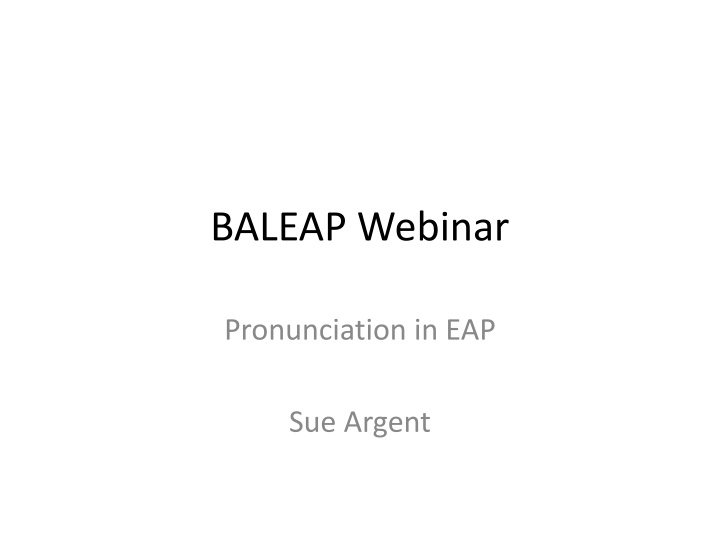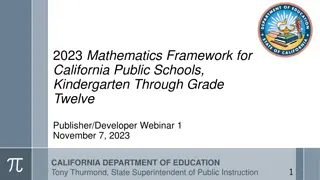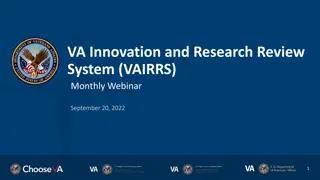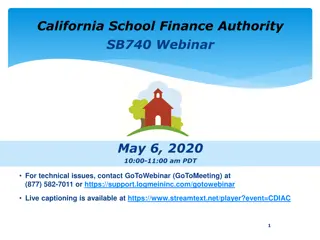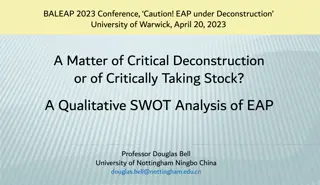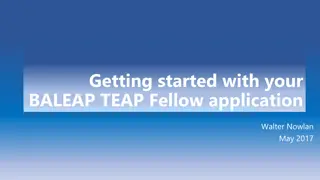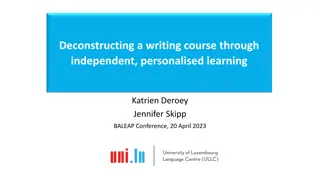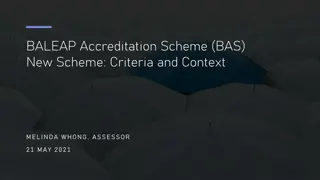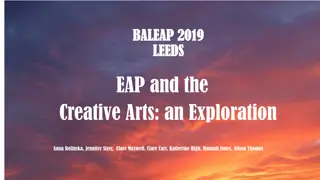BALEAP Webinar
In this collection of resources, explore the strategic use of stress, intonation, and discourse moves in academic discussions. Learn how to politely agree, disagree, make claims, challenge assertions, and clarify information in academic contexts. Discover effective protocols for addressing misunderstandings and navigate discussions for joint outcomes. Enhance your language proficiency for successful academic communication.
Uploaded on Feb 19, 2025 | 3 Views
Download Presentation

Please find below an Image/Link to download the presentation.
The content on the website is provided AS IS for your information and personal use only. It may not be sold, licensed, or shared on other websites without obtaining consent from the author.If you encounter any issues during the download, it is possible that the publisher has removed the file from their server.
You are allowed to download the files provided on this website for personal or commercial use, subject to the condition that they are used lawfully. All files are the property of their respective owners.
The content on the website is provided AS IS for your information and personal use only. It may not be sold, licensed, or shared on other websites without obtaining consent from the author.
E N D
Presentation Transcript
BALEAP Webinar Pronunciation in EAP Sue Argent
Academic discussion: Agreeing and disagreeing politely Really?
Academic purposes in discussion 1. To contribute to a jointly constructed outcome (Basturkman 1999) 2. To negotiate meaning and understanding 3. To negotiate the system
Strategic choices Purposes Discourse moves Language (including stress and intonation patterns)
Stress, intonation and discourse moves Apologising 1. 2. 3. 4. Sorry Sorry Sorry Sorry level tone: false fall tone: assertive / dismissive rise tone: assertive / controlling fall-rise tone: diplomatic / sympathetic
Stress, intonation and discourse moves Making a claim Our data retreating Confirming a claim from another speaker Of course ; exactly Clarifying a claim from another speaker I assume you consulted pre-war maps showed that the glaciers were
Stress, intonation and discourse moves Adding new information to challenge a claim from another speaker (the yes, but move) Although the data showed that the glaciers were retreating , precipitation account. Precipitation does wasn t taken into fluctuate . Bruce (2016) refers to this as a concession contra- expectation relation
Stress, intonation and discourse moves Challenging a claim assertively or diplomatically There s a problem here. I think there could be a problem here.
A useful protocol X said: I think you used the wrong data . You can also say: I think you sent the wrong email . It s possible you read the wrong article . Perhaps you used the wrong procedure . Student: Can you say? George Woolard (2013) developed this protocol and refers to it as messaging .
References Argent, S. and Alexander, O. (2013). Access EAP: Frameworks. Reading: Garnet Education. Basturkman, H. (1999). Discourse in MBA seminars: towards a description for pedagogical purposes. English for Specific Purposes, 18/1, pages 63-80. Bruce, I. (2016). Constructing critical stance in University essays in English literature and sociology. English for Specific Purposes, 42, 13-25. Woolard, G. (2013). Messaging: Beyond a Lexical Approach. Published online at Theround. http://the- round.com/resource/messaging-beyond-a-lexical-approach/
